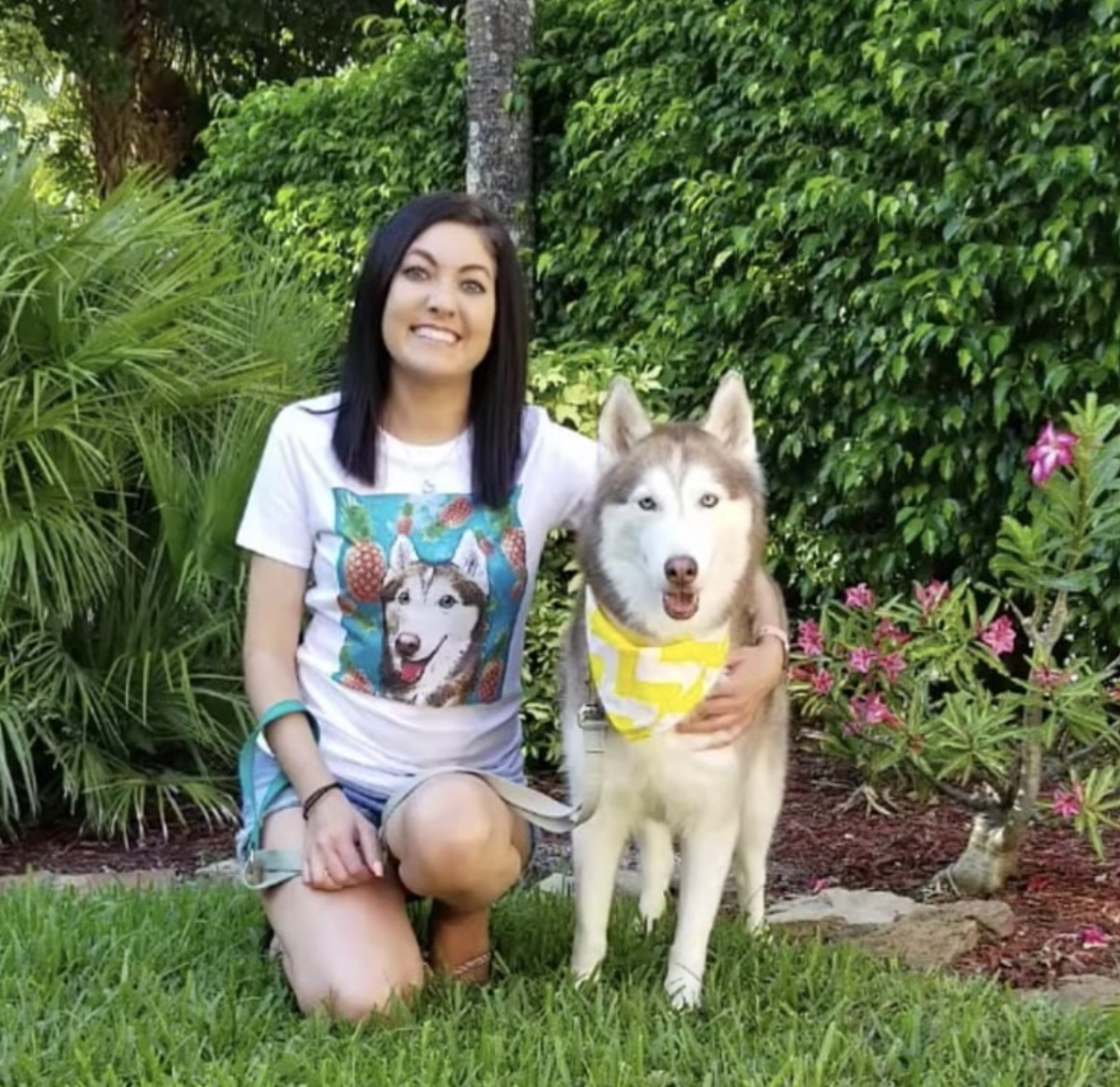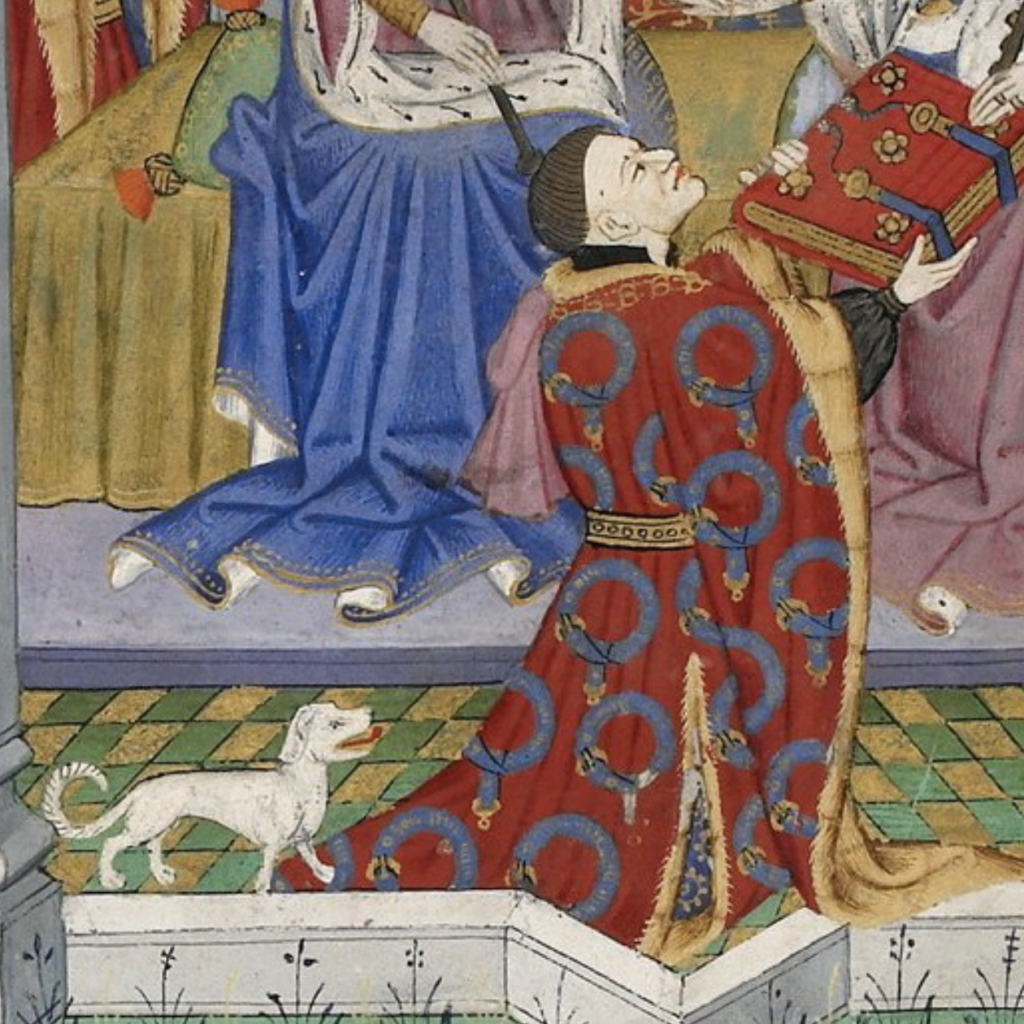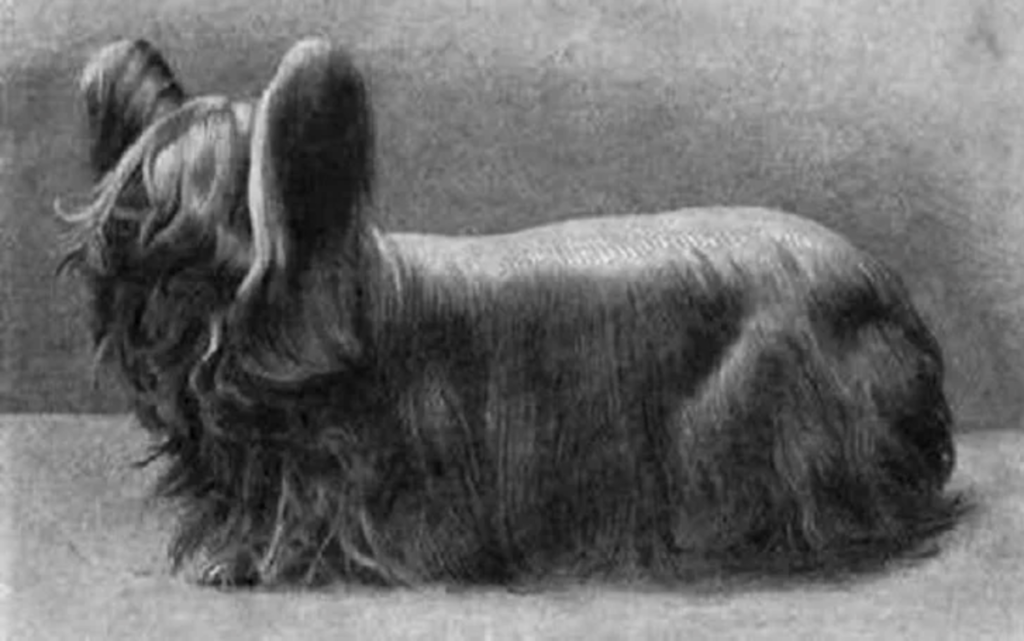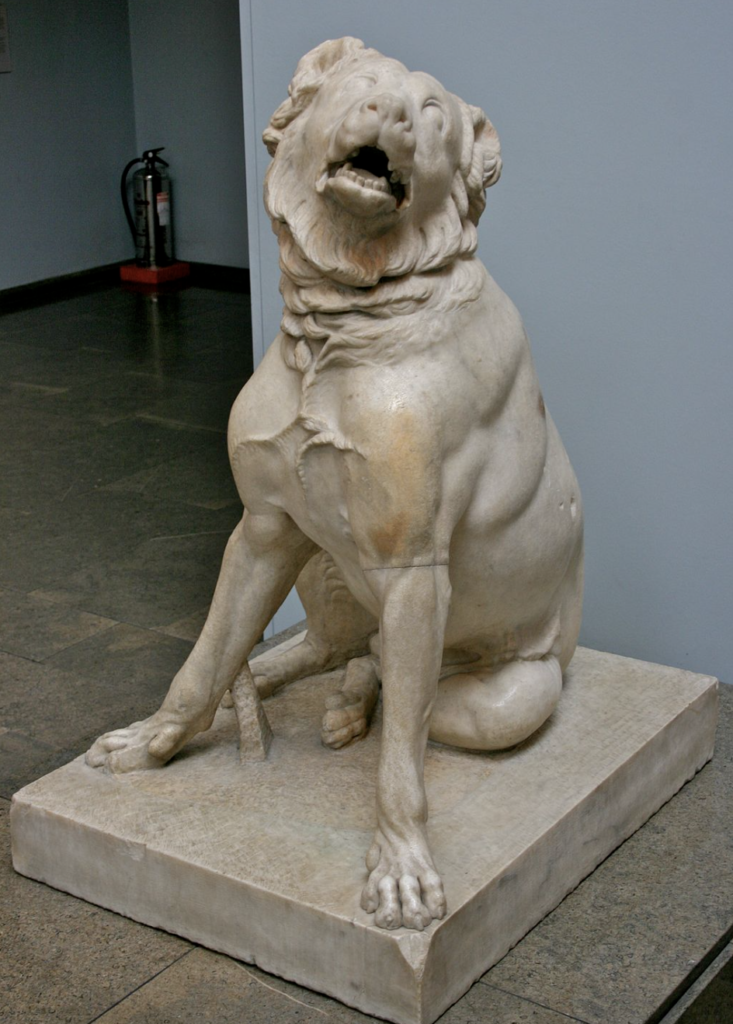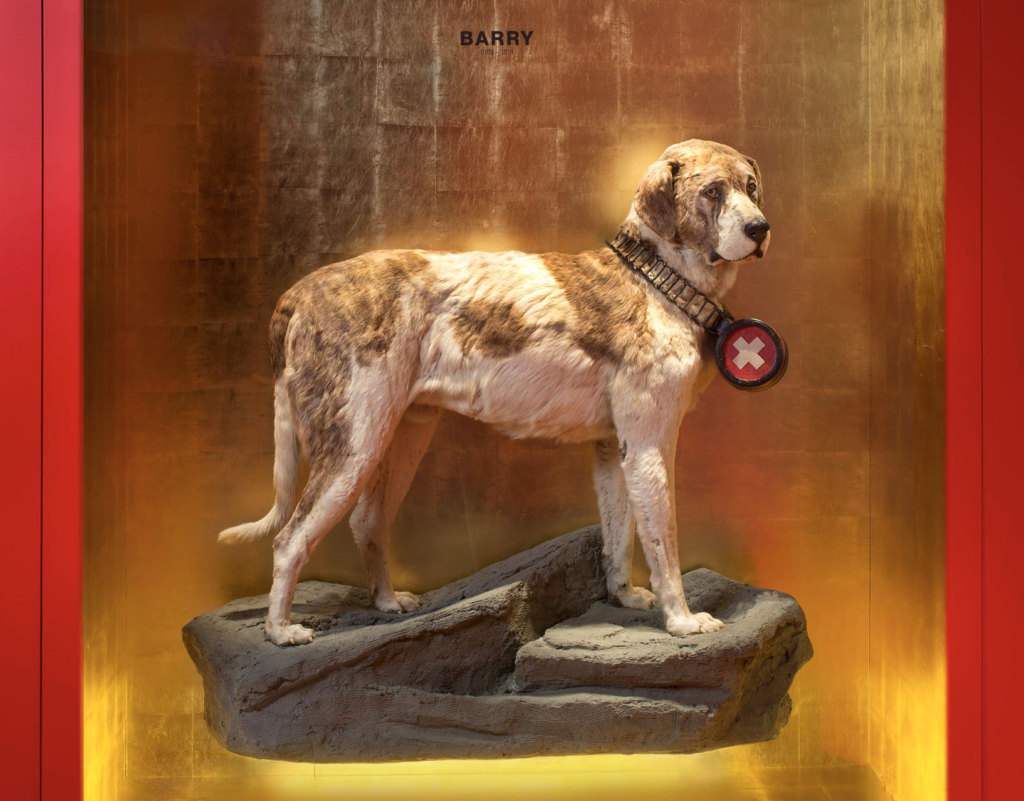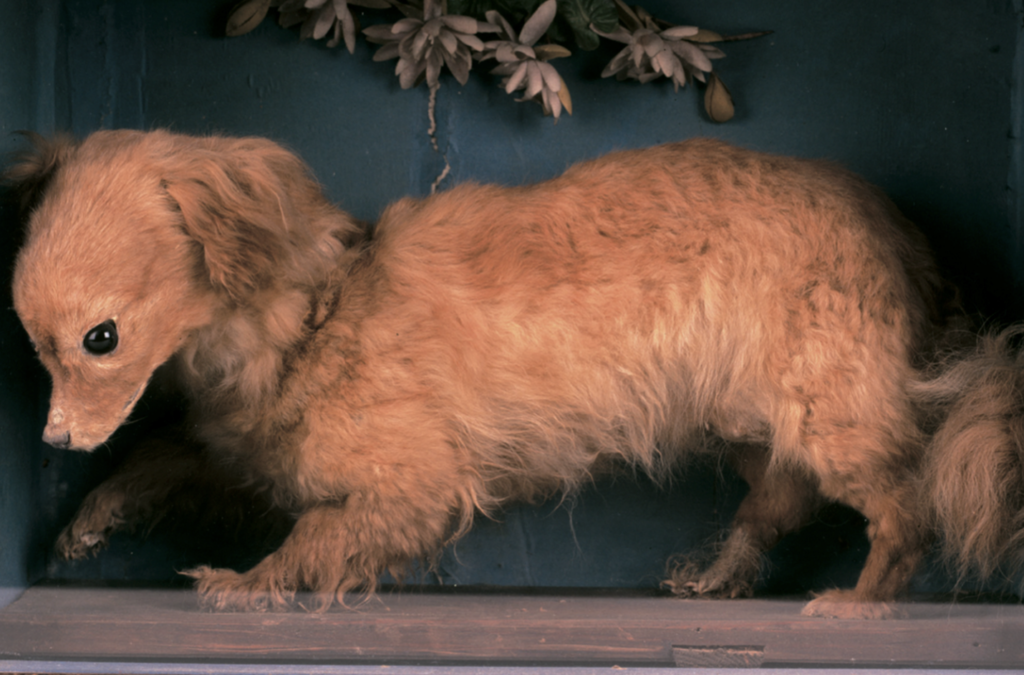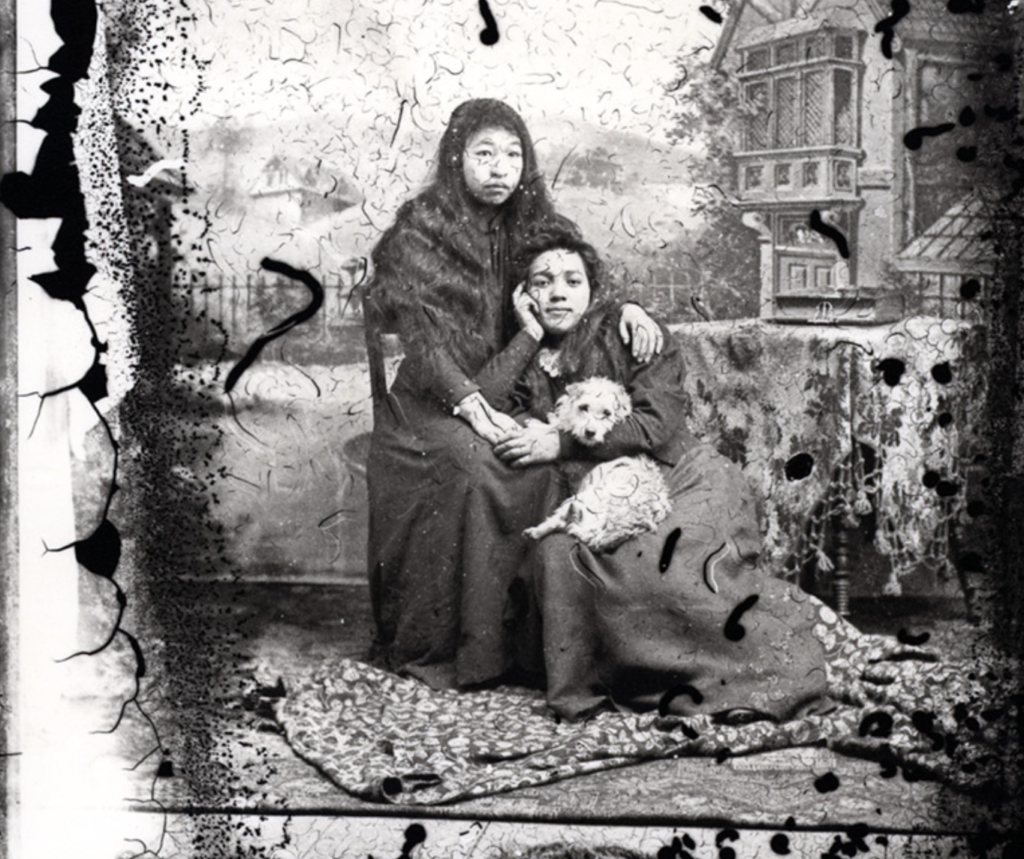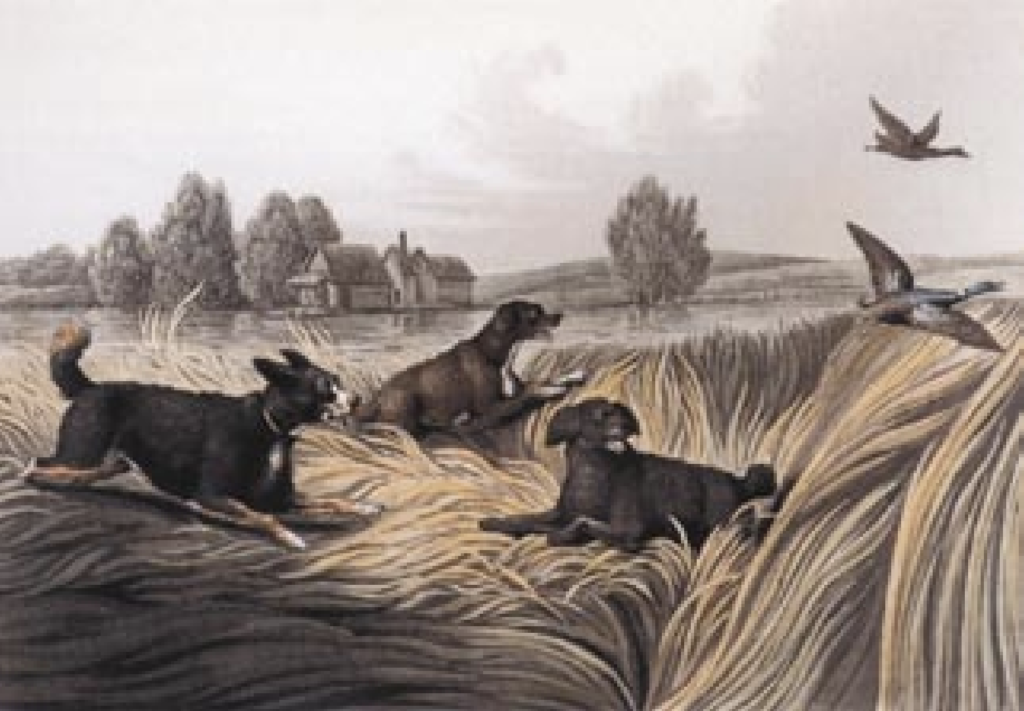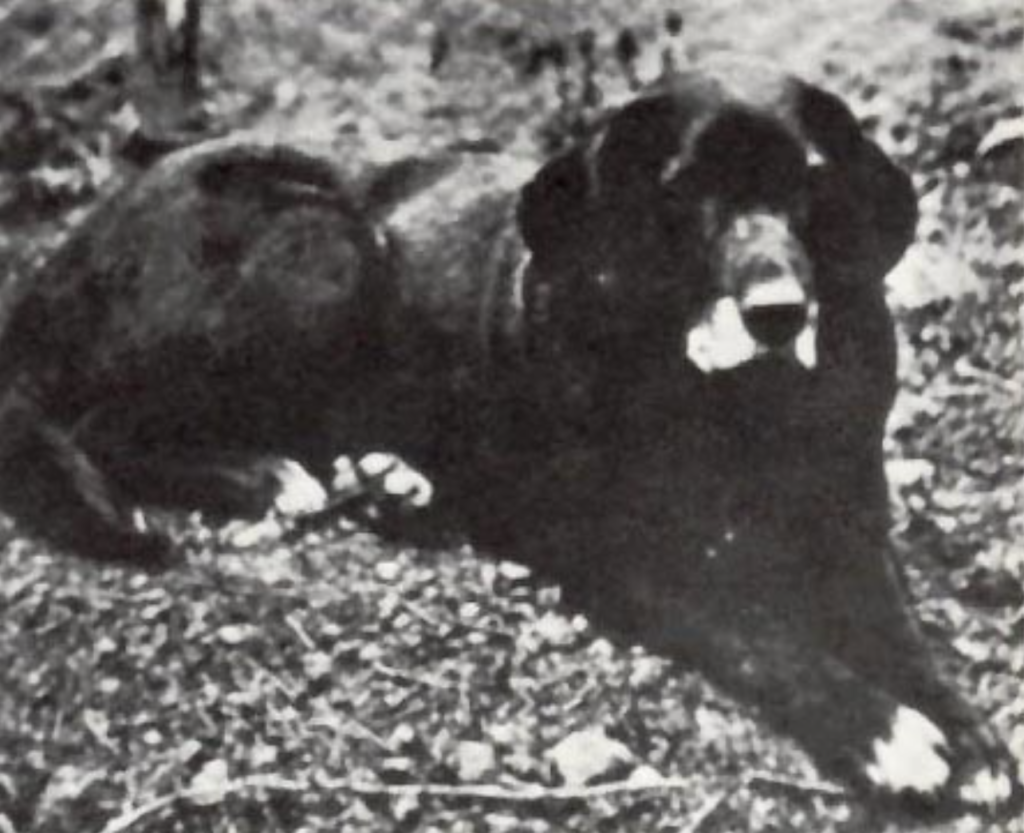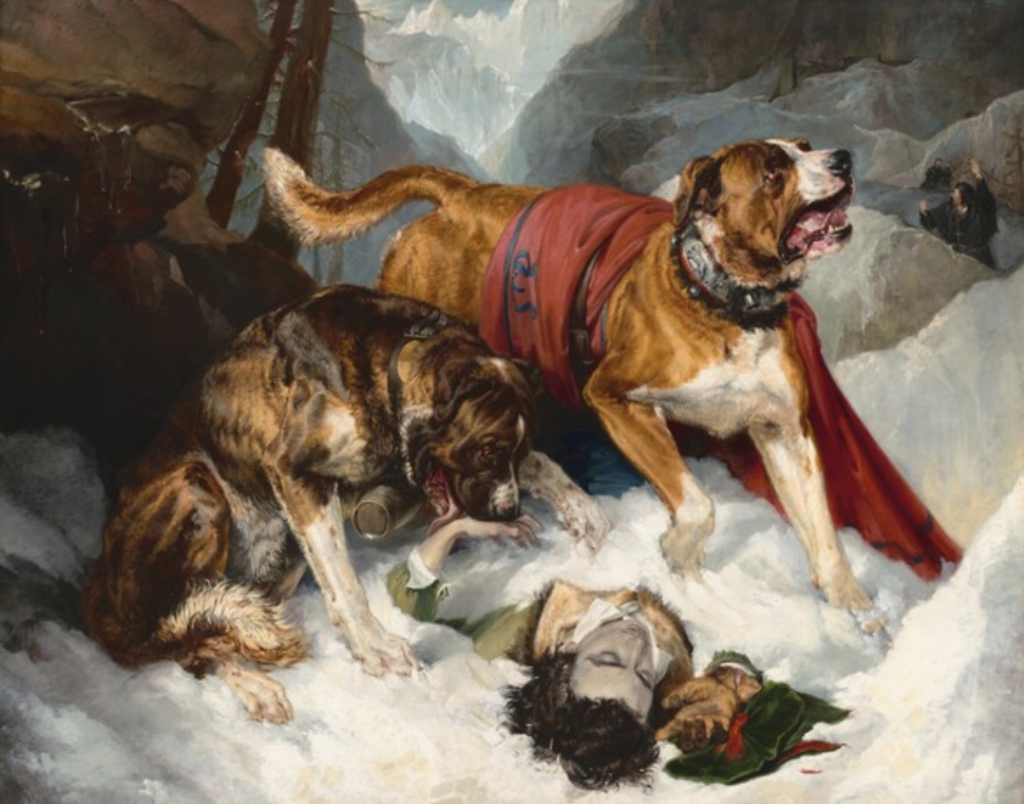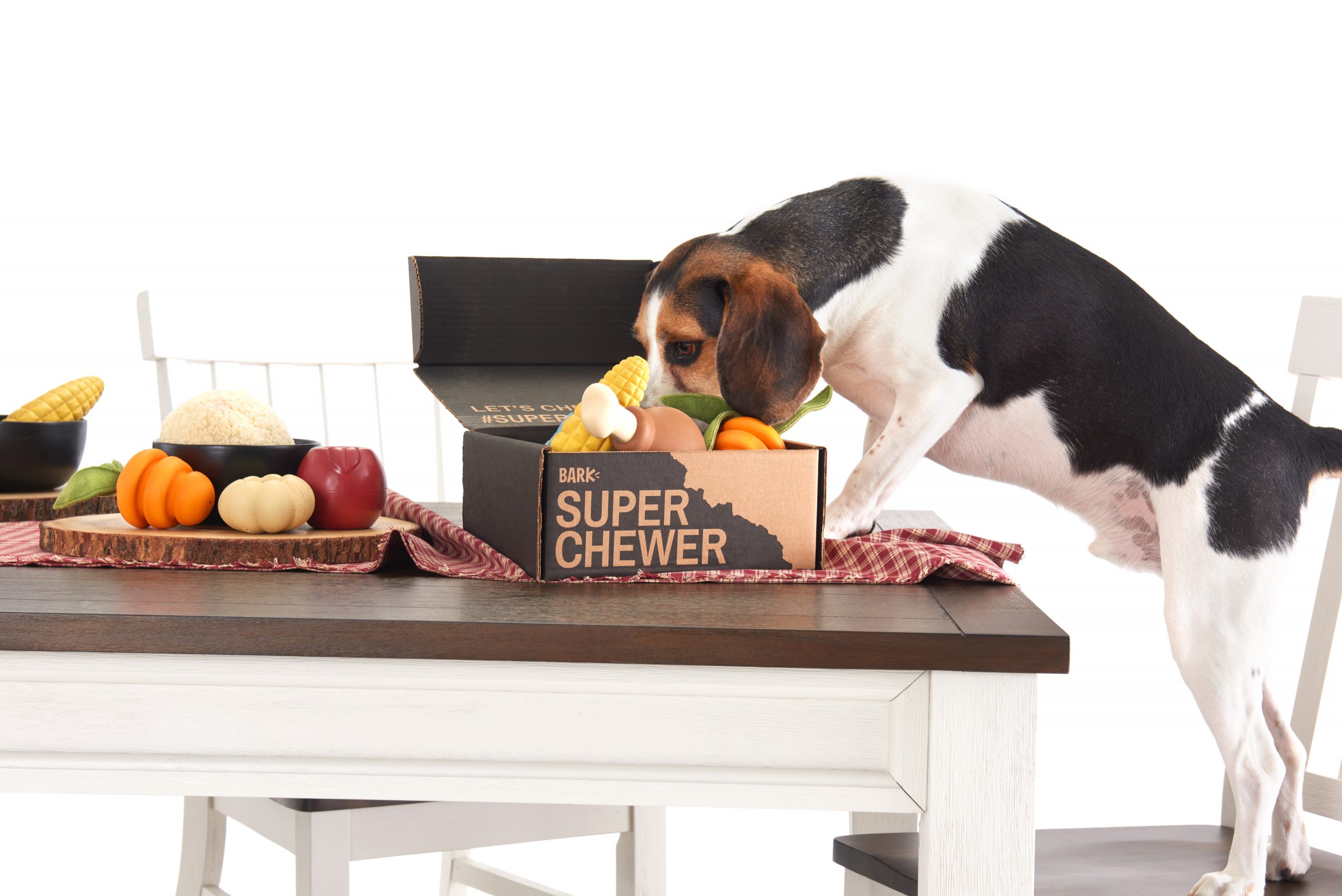They may be gone, but they’re certainly not forgotten. 15/10 would search these dogs on Petfinder if they were around today.
1. Talbot
Who They Were: At first glance, you may mistake the Talbot for a fire-breathing dragon, but né, he is but a dog. These pups are noted as having been medium-sized white dogs with short legs, long ears, and a curly tail9. Alas, there is no actual mention of fire-breathing abilities.
What They Did: Talbots were bred mostly for hunting. Their breed became most notable later on as the name of English pub, “Talbot House,” who used drawings of the dogs on their signs9.
When They Existed: Middle Ages
Where They Lived: Possibly Belgium, France, or England
Why They’re Extinct: The exact reason for the Talbot’s extinction is unknown9, but it’s thought that they are the ancestors of present-day beagles or bloodhounds7.
2. Paisley Terrier
Who They Were: If your first thought was “Girl, where’d you get your hair done?”, then same! These beautiful pups were very similar to today’s Skye Terrier, however, were noted for having a shorter back and were bred for this trait. Paisley terriers were a small dog breed with a long, silky silver coat, and were mostly kept as companions.
What They Did: Paisley terriers were specifically bred as early show dogs and pets6. Their only job was to look pretty and lounge around all day. Sounds like they were kind of like the Kardashians of the dog world back then.
When They Existed: 1800s
Where They Lived: Scotland. They were named after the city of Paisley, where the breed originated6.
Why They’re Extinct: Interest in them simply declined and their numbers dwindled6.
3. Molossus
Who They Were: The Molossus was a giant breed (~200lbs) similar to today’s mastiff. You can find mention of them all the way back to Aristotle in The History of Animals.
What They Did: These massive dogs were bred for use in ancient Rome’s military. They were sent to charge into battle to break up formations, or to hunt out people who were hiding. Others were trained to protect their humans in battle—they were even said to have helped Alexander the Great in his conquests11.
When They Existed: 300 BC
Where They Lived: Greece and Rome
Why They’re Extinct: Their reason for extinction is unknown.
4. Alpine Spaniel
Who They Were: Alpine Spaniels were large dogs (~88lbs–100lbs) built for cold climates, which is why they look so absolutely snuggly. Many of them had curly, medium-length white coats with patches of brown or red fur to keep them warm in the snow, but others may have been a solid tan/red/brown color3. One, named Barry, was said to have saved 40 people in the Alps around the 1800s. Barry’s taxidermied body is at the Natural History Museum of Bern (pictured above)1.
What They Did: They were bred to protect livestock, as well as for search and rescue efforts for people lost in the Swiss Alps3.
When They Existed: 1800s
Where They Lived: Swiss Alps
Why They’re Extinct: It’s thought that they went extinct due to a disease that affected the breed, but experts believe they are the ancestors of today’s Saint Bernard and Clumber spaniel3.
5. Turnspit
Who They Were: Turnspits were small dogs that were low to the ground and usually blue/gray in color. They’re described as having crooked front legs and a short tail that was often cropped7.
What They Did: The deplorable treatment of these dogs was so bad that even authors in the 1800s were making note of how miserable they must have been. Turnspits were bred for the sole purpose of running all day long on what could be called an over-sized hamster wheel connected by chain to turn a spit (a metal rod you might see with modern-day pig roasts) roasting meat over the kitchen fire. The terrible treatment of this breed and other dogs around this time helped start the ASPCA10.
When They Existed: 1500s–1800s
Where They Lived: Turnspits originated in Welsh castles, but their use became widespread throughout other countries, and they were even believed to be used in the United States possibly by William Penn10.
Why They’re Extinct: “They were ugly little dogs with a quite morose disposition, so nobody wanted to keep them as pets. The turnspit dogs became extinct,” says author Jan Bondeson, author of Amazing Dogs, a Cabinet of Canine Curiosities to NPR.
Related Article: A Breed You’ve Never Heard Of Is The Reason We Fight Animal Cruelty Today
6. Salish Woolly Dog
Who They Were: Salish Wooly dogs were a small dog breed with long, soft white hair, pointed ears, and curly tails8.
What They Did: The hair of the Salish Woolly dog was sheared and became popularly used for “wool” in clothing and blankets during the time. It’s believed that these fabrics were so common that they wouldn’t have even been expensive. One of these blankets is now kept at the Burke Museum of Natural History and Culture in Seattle, Washington8.
When They Existed: 1700s–1900s
Where They Lived: Salish Coast, Vancouver Island (Canada today) and Washington State
Why They’re Extinct: Salish Woolly dogs were originally kept separate from other domestic dogs in the area, but as Europeans began settling in Canada, their dogs would breed with the Woolly dogs and eventually bring an end to “purebred” Woollys8.
7. Moscow Water Dog/The Moscow Diver
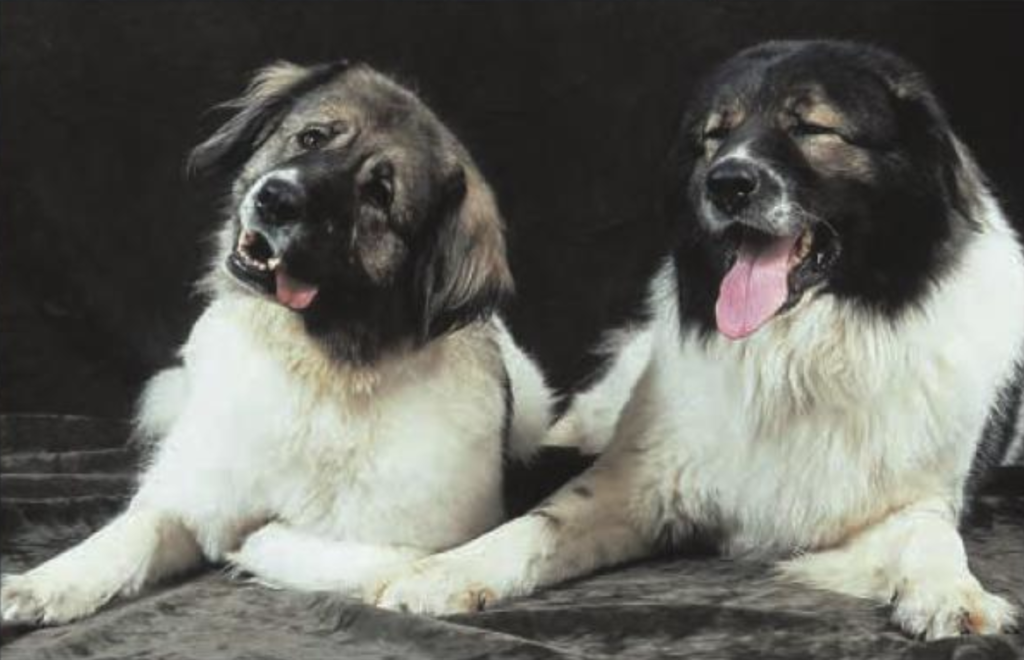

Who They Were: There’s not much detail about the Moscow Water Dog since they didn’t exist for long, but they would have looked like a mix between a Newfoundland and a Caucasian Shepherd.
What They Did: These big guys came about as an attempt to breed a water rescue dog, but breeders soon realized they were far too aggressive and much more interested in biting people in the water instead of rescuing them. Whoops! How did that happen? Sadly for us dog lovers of the world, most of the purebred lineage in Russia was destroyed during WWII. Breeding kennels, bookkeeping of breed personalities, health, and dispositions—gone2.
To rebuild, the Soviet Union’s Red Star kennels were essentially trying to create their own new dog breeds without much knowledge of which breeds to mix for the outcomes they wanted. The likely reason why they ended up with a search and rescue dog that bites2.
When They Existed: 1940s-1950s
Where They Lived: Russia
Why They’re Extinct: Breeding was stopped when they became more interested in biting people than doing their job (This dog is a vibe.)
8. Tweed Water Spaniel
Who They Were: It may blow your mind to find out that in the 1800s, this guy, Lord Tweedmouth, kept ledgers of the dogs he was breeding. Two of his dogs—a male named “Nous” and a bitch (We mean the technical term! Stop giggling!) named “Belle”—played an important role in some of the dog breeds we have today4.
Nous is most likely the ancestor of our current golden retrievers, but Belle was what would have been known as the extinct Tweed Spaniel, and most likely an ancestor of the spaniels we have today. Not much is known about their original characteristics, but they were thought to be liver-colored with a long coat and droopy ears4.
What They Did: These pups were intelligent and bred as retrievers and water dogs4. If they still existed, they’d probably be playing fetch with us today.
When They Existed: 1800s
Where They Lived: Scotland
Why They’re Extinct: Unknown
9. St. John’s Water Dog
Who They Were: The St. John’s Water Dog featured a water-resistant coat, which made them a great friend to fishermen. They were medium-sized and most likely similar to a smaller Newfoundland dog. They often had black coats with a white crest on their chest5—sounds more like a puppy tuxedo.
What They Did: These pups loved the water and were often found alongside fishermen on their boats, trained to fetch distant fish nets or dive for objects in the water5.
When They Existed: 1800s–1900s
Where They Lived: Canada
Why They’re Extinct: In the 1800s, in an attempt to encourage raising sheep, the government started taxing any dogs sold for a purpose other than herding sheep. I can only assume if these dogs had had opposable thumbs, they would have taken to dumping some tea in the harbor to ensure their survival with fewer taxes. Unfortunately, the high taxes led to a decline in their popularity, and the last known male St. John’s Dog died in the 1980s5.
10. Alpine Mastiff
Who They Were: Even authors writing books on the history of dog breeds in the 1800s, like H.D. Richardson7 and M.B. Wynn13, had difficulty figuring out what Alpine Mastiffs looked like. Consistent features include their massive size, noted as being around 130lbs with droopy, heavy ears.
The authors mention differing descriptions that they’ve received from friends and acquaintances as to what they look like—some short hair, some long hair; some brindle-colored, some white with brown/black patches; some using “Alpine Mastiff” as another name for a Saint Bernard17. Remember, these gentleman couldn’t just do some Googling, likely waiting months for written replies. Serious kudos to these old-school history detectives.
What They Did: Alpine Mastiffs were noted to have been trained by monks at monasteries, and were bred as search and rescue dogs in the snowy Swiss Alps to recover people and livestock7.
When They Existed: 1800s
Where They Lived: Swiss Alps
Why They’re Extinct: Unknown
Sources:
3“Doginfo411.Com.” DogInfo411com, https://doginfo411.com/alpine-spaniel/.

